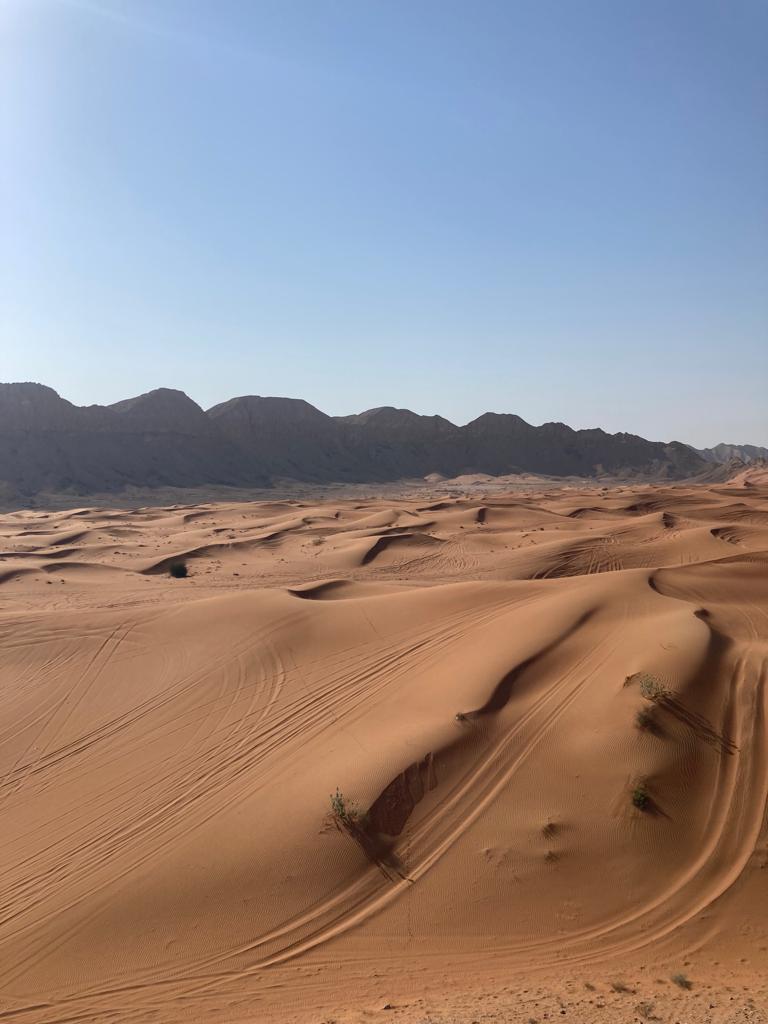- IHM - Serices and knowledge transfer in the field of clutural and natural heritage

Faya Palaeolandscape
Central Sharjah Region (Mleiha) | Emirate of Sharjah, UAE
Project Duration: since 2020
The Faya Palaeolandscape encompasses an outstanding example of a Stone Age desert landscape documenting early modern human occupation of the area from the early Middle Palaeolithic to the Neolithic during varying climatic conditions on the Arabian Peninsula. The archaeological and palaeoenvironmental findings represent one of the earliest and most continuous records of human occupation in a desert landscape. The oldest archaeological layer dates back approximately 210,000 years to the early Middle Palaeolithic, while the most recent dates to the Neolithic, around 6,000 years ago. The site illustrates several phases of human habitation, offering valuable insights into the evolution of societal structures, from hunter-gatherer groups to pastoral nomadic herders with burial practices. The area provides exceptional conditions for archaeological and palaeoenvironmental research, contributing to our understanding of human adaptation to extreme climates over millennia. Climate fluctuations, occurring roughly every 20,000 years, caused the environment to oscillate between an arid desert and a wetter landscape with lakes and flowing water. The geomorphological and geohydrological features of the Faya Palaeolandscape document these environmental changes, which supported repeated human occupation through the availability of surface and groundwater. Early modern human groups utilized this landscape for shelter, resource extraction, water collection, hunting, and later, animal husbandry and burial practices. The unique combination of water sources, raw materials, and shelters established the Faya Palaeolandscape as one of the earliest inhabited desert landscapes, filling a gap in our understanding of early human development and adaptation in the Arabian Peninsula, even during hyper-arid climatic conditions.
IHM was responsible for preparing the Emirati Tentative List entry for the Faya Palaeolandscape and continues to assist with preparing the World Heritage nomination and management plan. The tasks also included a comprehensive attribute mapping and the development of a management plan.
The cooperation is ongoing as the process to inscribe the site as a UNESCO World Heritage property continues.

